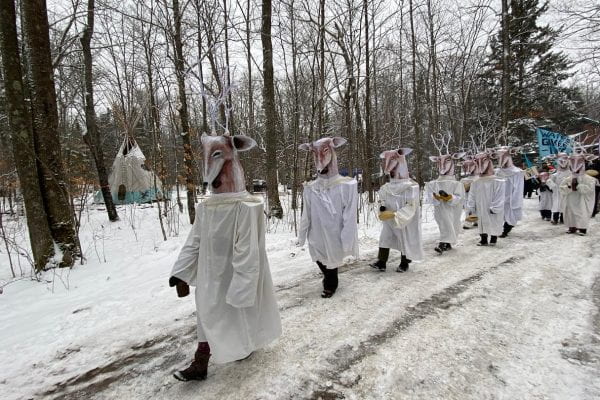The American Monument in 2020
What should we do with unwanted American monuments? Our answer will hinge on the social and historical contexts surrounding the monument and on the ideological stances of those involved in the debate – who doesn’t want them, who does, and why? In the summer of 2020, this question became unavoidable as millions of Americans called for the removal, destruction, recontextualization, or preservation of Confederate and colonial monuments across the United States.1 In […]
Hong Kong in Protest
My project looks at Hong Kong’s protest art in public spaces of Hong Kong, whether it be streets or art spaces, to learn how they function in regards to how they appeal or interact with their audience, the Hong Kong people, and how they are presented in spaces. Some are meant to be stepped upon, some are meant to be sung, some are seen in protest sites, and all speak to solidarity and resistance.
George Floyd Murals in Minneapolis: Can Aesthetic Make Change?
For my project, I wanted to examine the murals that I saw all over my hometown of Minneapolis this summer. While initially over the summer, I was drawn to the colorful aesthetically pleasing murals over popular storefronts, this project and this course this semester made me examine the problematic nature of them
Détournement: How Artists Co-opted the Statue of Liberty
During the summer of 2020, Artists borrowed symbolism from history to better convey their message to the public. One of the most commonly used symbols used was the Statue of Liberty on Ellis Island in a form of détourement. While some artists, use the statue as a call of everlasting hope for a better future, other artists call for reconstructionism. Either way, the use of this iconic symbol is an effective way of demanding racial
What Amazon’s Unionization Strikes Can Tell Us About the Power of Branding
Amazon’s brief history as a company has been rife with worker’s rights violations and anti-unionization strategization. This paper outlines the history of memes used as a medium for collective protest against the ruling class and the growing overbearing power of corporations.
Laying on the Line: Media Coverage of #StopLine3
Art is central to the Indigenous-lead actions against the construction of the tar sands pipeline Line 3 in Minnesota and Ojibwe territory. Using large-scale puppets, costumes, traditional clothing and performance, Water Protectors fight to represent the human and non-human lives threatened by the pipeline. Their consistent documentation, live-streaming, press-releases, and social media campaigning around these art dominant actions spread awareness of the violence imposed by Line3 while celebrating the sacredness of the Minnesota, Ojibwe, and Aanishinabe lands.


